By Christopher Rollyson  Many a CMO, CTO and CIO is asking him/herself when, how and why they should introduce social networking to the enterprise and, unlike startups and consumers, they must contemplate how these emerging phenomena fit with the corporate universe of technology and business processes. Critical to the enterprise adoption calculus is guessing how prevalent new technologies, processes and habits will be, so here is a back-of-the-envelope look at how social networks might look three years in the future. Many a CMO, CTO and CIO is asking him/herself when, how and why they should introduce social networking to the enterprise and, unlike startups and consumers, they must contemplate how these emerging phenomena fit with the corporate universe of technology and business processes. Critical to the enterprise adoption calculus is guessing how prevalent new technologies, processes and habits will be, so here is a back-of-the-envelope look at how social networks might look three years in the future.
Continue reading Quick Take: Enterprise Social Networking Crystal Ball
By Christopher Rollyson 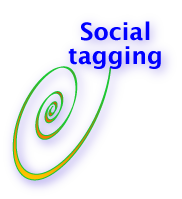 This article will explain something that’s probably been nagging at you for some time: what in the world are all these little icons that seem to be popping up everywhere? This article will explain something that’s probably been nagging at you for some time: what in the world are all these little icons that seem to be popping up everywhere?

These little icons take you to various social tagging and bookmarking systems, which are an exceptionally powerful Web 2.0 phenomenon that is under the radar in 2008 but has immense potential for enterprises and individuals. Emerging social tagging solutions offer marketers an excellent means to enable customers to help each other and improve a wide range of Website metrics. The most well known tagging/bookmarking sites are B2C: Del.icio.us, Furl, Netvous, Bluedot and Ma.gnolia, but tagging has a solid B2B value proposition as well.
Continue reading Everything You Wanted to Know about Web 2.0*: Social Tagging
By Christopher Rollyson  LinkedIn and other social networks are often hard for executives to get their mental arms around—precisely because business and government have had linear structures, which function very differently than network structures. Reflect on many of the metaphors and concepts on which we depend: supply chains, production lines, value chains, hierarchies: even the notion of a process is usually linear. Our habit of thinking linearly makes networks difficult to deal with, conceptually and practically. LinkedIn and other social networks are often hard for executives to get their mental arms around—precisely because business and government have had linear structures, which function very differently than network structures. Reflect on many of the metaphors and concepts on which we depend: supply chains, production lines, value chains, hierarchies: even the notion of a process is usually linear. Our habit of thinking linearly makes networks difficult to deal with, conceptually and practically.
However, society is morphing from linear to networked patterns in almost all dimensions, and, although LinkedIn and other social networks reduce transaction costs, they don’t save us from having to deal with networks. It’s also interesting that the world, say, biological systems, exhibits networked patterns, and humans’ communication and business patterns are just starting to get in synch with that. If we want to be more effective and secure in this environment, the question of the moment is, “How do we make networks work for us?”
Continue reading How to Increase the Value of Your Network
By Christopher Rollyson 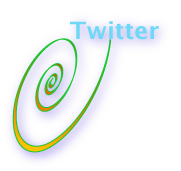 Twitter is a relatively new Web 2.0 phenomenon that is blazing a new category, which some people term “microblogging,” because all Twitter posts are limited to 140 characters, and twittering is reporting. Twittering can be done via a plain old cell phone via text (SMS) messaging, via a web browser or via a smartphone, and it is chiefly a broadcast activity: twitterers push SMS messages out to their networks. Twitter is a relatively new Web 2.0 phenomenon that is blazing a new category, which some people term “microblogging,” because all Twitter posts are limited to 140 characters, and twittering is reporting. Twittering can be done via a plain old cell phone via text (SMS) messaging, via a web browser or via a smartphone, and it is chiefly a broadcast activity: twitterers push SMS messages out to their networks.
Like most things Web 2.0, Twitter began within the B2C, pop culture context, but I predict that it will become a staple for enterprises by 2010. Twitter is very transformational, and it holds significant disruptive potential for business processes. Here I will outline its use for forward-thinking CMOs, CEOs, CIOs and other executives.
Continue reading Everything You Wanted to Know about Web 2.0*: Twitter
By Christopher Rollyson 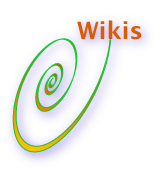 Wikis are one of Web 2.0’s most secret weapons as of this writing, and they will transform the metrics around administration and communication. They are “leicht,” as Germans say. Deceptively simple. Sublime. Wikis are one of Web 2.0’s most secret weapons as of this writing, and they will transform the metrics around administration and communication. They are “leicht,” as Germans say. Deceptively simple. Sublime.
Wikis are collective desktops that enable teams to collaborate much more efficiently than they do now. Gone are myriad versions of locally (on your computer) stored spreadsheets, presentations and documents that team members shuffle around via legacy email, fax, phone and sneakernet. Legacy project management is terrifically inefficient, and wikis enable their complete reengineering by maximizing the power of asynchronous communication (not concurrent, like a face to face conversation). Here’s how they work.
Continue reading Everything You Wanted to Know about Web 2.0*: Wikis
By Christopher Rollyson  LinkedIn tries to curb the natural human competitive instinct by capping the number of contacts displayed at 500, so people who like to achieve high numbers had to create their own sites. Many people wonder how it’s possible to manage large networks, so here I will address that briefly. LinkedIn tries to curb the natural human competitive instinct by capping the number of contacts displayed at 500, so people who like to achieve high numbers had to create their own sites. Many people wonder how it’s possible to manage large networks, so here I will address that briefly.
The organizing principle that drives activity in LinkedIn or other networks is, “What’s the point, what am I trying to accomplish?” Without some kind of intention, large numbers of contacts are essentially data and nothing more. They could be evolved to higher value relationships, but that takes work, and no one has the kind of time to deal with such a huge network.
Continue reading How Do People Manage Huge LinkedIn Networks?
By Christopher Rollyson 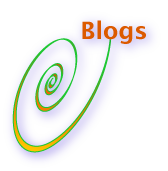 Everything You Wanted to Know about Web 2.0: Blogs concisely explains blogs’ value proposition for businesses and executives. Everything You Wanted to Know about Web 2.0: Blogs concisely explains blogs’ value proposition for businesses and executives.
Probably the most pervasive Web 2.0 tool out there is the weblog or “blog.” Blogs have a personal element to them and reflect the personal element of Web 2.0, which is at root about P2P (person to person) communication and connections. Blogs are a powerful way to share what things are important to you.. and to your stakeholders, whether they are boards of directors, prospective employers, partners or prospective employees.
As you can see from the Google Trends profile below right, references to “blog” have steadily grown since 2004, but many executives are unfamiliar with what blogs are exactly, how they work and what they’re good for. The EGLI Guides Series will briefly define blogs from a business and marketing context, explain how you can use them and share a few enterprise blog vendors.
Continue reading Everything You Wanted to Know about Web 2.0*: Blogs
By Christopher Rollyson Bank Panic in Second Life Prompts Battlefield Promotion of Regulators reveals interesting parallels between physical and virtual worlds—it’s real money, after all.

“What? I can’t go to the grocery store! My bank’s automated teller machine refuses to dispense cash, and I’m planning a big cook-out tonight!” What’s an avatar to do?
It turns out that an inworld bank failure this summer cost residents about $750,000 USD and led to a run on Second Life banks, which eventually precipitated intervention by the highest authority available, the virtual world’s creator, Linden Labs. But the root cause may well have been LL’s earlier intervention in the economy by banning gambling on the site.
Continue reading Noodle III: Bank Panic in Second Life Prompts Battlefield Promotion of Regulators
By Christopher Rollyson  I am pleased to announce that The Executive’s Guide to LinkedIn is going on the road! Our first public seminar will be held on 11 March 2008 at the University of Chicago’s Gleacher Center. The morning seminar’s focus will be helping executives with underutilized Linkedin accounts to take it to the next level by leveraging our planning methodology as well as LinkedIn’s advanced tools. I am pleased to announce that The Executive’s Guide to LinkedIn is going on the road! Our first public seminar will be held on 11 March 2008 at the University of Chicago’s Gleacher Center. The morning seminar’s focus will be helping executives with underutilized Linkedin accounts to take it to the next level by leveraging our planning methodology as well as LinkedIn’s advanced tools.
As you can imagine, I talk with many executives about LinkedIn, and most of them don’t see its real potential because LinkedIn’s tools are not fully explained, and the site doesn’t offer guidance for using it to get results. This seminar addresses the need. Here’s the agenda, and I’ve included some thoughts behind what we’ll do below.
Continue reading New Seminar to Guide Executives in Using LinkedIn
By Christopher Rollyson Web 2.0 Impact on 2008 U.S. Presidential Election Declared Minimal at Executives’ Club, but cantankerous subtext hints at possible monkey wrench—democratic race in spotlight.
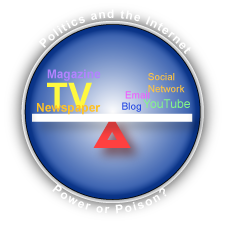 The Executives’ Club of Chicago fielded an expert panel to brief Midwest executives on Web 2.0’s current and likely impact on one of the most watched U.S. elections in recent history. Marie Cocco, a renowned political columnist, Peter Greenburger, Director of Google’s Elections & Issue Advocacy Team, and Alan Webber, Senior Analyst of Forrester Research brought to bear diverse perspectives on the question at the event, which took place at The University Club on January 31, 2008. The Executives’ Club of Chicago fielded an expert panel to brief Midwest executives on Web 2.0’s current and likely impact on one of the most watched U.S. elections in recent history. Marie Cocco, a renowned political columnist, Peter Greenburger, Director of Google’s Elections & Issue Advocacy Team, and Alan Webber, Senior Analyst of Forrester Research brought to bear diverse perspectives on the question at the event, which took place at The University Club on January 31, 2008.
They produced a logical conclusion, namely that Web 2.0 was a force in the making but that it would probably not be a decisive factor this year. The session was graciously co-hosted by Communications Committee Co-Chairs David Prosperi, Vice President Global Public Relations, AON and David Blake, Publisher of Crain’s Chicago Business.
As usual, I will share my notes of speakers’ remarks before adding my between the lines analysis and conclusions. As an added bonus, I will also share select points of an influential source who, although not in the room, was virtually present through repeated reference.
Net-net: High Volatility and Standard Deviation
Although panelists agreed that statistical analysis clearly showed that social networks and “the Internet” would have a minimal impact of deciding who would win the U.S. presidency this fall, evidence is complex and all over the map. Panelists referenced several instances in which the Internet added dynamism and uncertainty to the mix: key blog posts and videos can emerge from anywhere and can flash across a growing portion of the nation’s consciousness with unprecedented speed. Moreover, the Internet enables people to communicate, mobilize and act with alacrity, and elections are overwhelmingly about communication and decision, so election monkey wrenches cannot be ruled out.
Marie Cocco, Syndicated Columnist, The Washington Post Writers Group
Marie Cocco is the outsider’s insider in Washington. She uses her strength and experience as a reporter to uncover hidden histories that illuminate the present. Her reporting and commentary on cultural and political topics have won prizes from the Associated Press, the Newswomen’s Club of New York, the New York Newspaper Guild, the New York State Publishers’ Association and the New York Press Club. She has been a guest commentator on CNN, the Fox Network, MSNBC, CNBC and C-SPAN as well as national radio shows.
In general, the prospect of “the Internet” having a material impact on the election is minimal because it does not affect how people vote. Traditional media still provides the lion’s share of information to voters, according to a Pew Research Center study that she quoted several times, Internet’s Broader Role in Campaign 2008.
- There are turning points in campaigns, but thus far they have had little to do with the Internet. She referenced Hillary’s gaffe in Philadelphia on the U.S. driver’s license issue as well as the resurrection of John McCain in New Hampshire for his tireless sharing during town meetings. The format was particularly suitable for him, and he generated extensive support. Neither of these had anything to do with the Internet.
- 60% of voters get their campaign information from television (Pew), while only 15% from the Internet—and most of the sites Internet users visit are mainstream media.
- However, it is clear that the Internet can be a potent fundraising weapon—for the same reason that e-commerce is so popular (“it’s easy”)—which is reflected by Ron Paul and Howard Dean efforts. However, it doesn’t move voters.
- It is beginning to show its promise for grassroots organization. Voters and political operatives have extensive email lists. here she referred to Huckabee’s mobilization of voters in Iowa by tapping home schooling, religious and other “special interest” email networks, which enabled him to come out of nowhere to win the primary. Hillary Clinton, before announcing her candidacy, tapped all manner of women’s email lists to leverage gender as an election issue. Barack Obama is using the Internet for fundraising and grassroots organization, and John Kerry’s endorsement will mean leveraging his 3 million name prime email list.
- However, she did admit that the viral video had killed George Allen’s reelection, but she concluded that these things were too isolated to have a defining impact.
- The demographics of the Internet still skew male, educated and wealthy; they do not reflect the electorate. This makes it particularly difficult for the Democrats, whose core constituencies lag in online adoption.
- Hillary Clinton has garnered the lion’s share of negative Internet-produced content, according to Cocco. The liberal blogosphere is dominated by white males.
- Increasingly people are online 24 hours a day. Trust in traditional media is falling, while new offerings of “user-generated content” grow (for one, CNN’s I-Report). What can campaign strategists learn from these developments?
- The Internet is an emerging tool for grassroots organizing, but two-thirds of young Americans do not go to college. Hillary Clinton figured this out, and she focused New Hampshire organization on low-tech devices like flyers in bars and laundromats.
- Social networking doesn’t come close to reflecting the electorate: during the YouTube debates, the Republican debate didn’t address taxes while the Democratic debate didn’t take on healthcare. There will also be privacy issues when people begin to understand that communicating online means loss of privacy. She mentioned high school athletes being kicked off teams when school officials found party pictures of them on Facebook.
Peter D. Greenberger, Director of Google’s Elections & Issue Advocacy Team
Peter joined Google in May 2007 to build and manage a new Elections & Issue Advocacy sales team dedicated to introducing Google solutions to political campaigns, committees, and issue advocacy groups. Previously, he grew the public affairs division of New Media Strategies, a Web 2.0 marketing firm, working with clients such as the Democratic Senatorial Campaign Committee, Discovery Networks, Ford Motor Company, the Granholm for Governor campaign, Merck, Inc., Wachovia, the Washington Redskins, and XM Satellite Radio. Prior to that, Peter spent ten years working on presidential, gubernatorial, U.S. Senate and Congressional campaigns, including a stint as the Clinton White House.
- Peter unsurprisingly saw the Internet’s role in the election as more important than Marie had depicted, citing (Google) research that showed TV and Internet trending toward parity. He postulated that the writers’ strike and the lack of original content was hurting TV.
- Web 2.0 is clearly causing candidates to lose control of their messages because voter/publishers who create content that strikes a chord and gains significant attention can, even if they are trying to help a candidate, do more harm than good. Communication is becoming more chaotic.
- It is very difficult to contain news, and response must be within minutes, not hours. How to engage the community and organize people?
- Google has a “no smear” policy for its advertising. While it is possible to create “negative” ads, they are scrutinized to ensure they are issues-based, not personal. Google does not allow personal attacks.
- The Internet makes it easy for younger people to get involved, but the question is, “When will online begin to persuade offline?
- Mobility will add another wrinkle to politics because devices and the context around the mobile user are somewhat unique (and will require a different approach to communicating). Key groups like Latinos access the Internet via their mobile phones. SMS (texting) is a completely different type of messaging (limit 140 characters).
He briefly reflected on Google’s vision for its role in “the democratic process” and explained tools that were particularly relevant to candidates. Among them:
- Google Trends enables people to track the “popularity” of words and phrases based on Google searches. The example of “Freakonomics” was spiky as a function of mass media acclivity.
- Google News aggregates myriad news sources, giving voters a dashboard to follow their favorite causes. One feature enables anyone named in an article to respond to the topic or issue about which s/he was quoted. This enables candidates to respond to what they may feel is wrong information. This feature is available to everyone (not just candidates).
- The Elections 2008 Gadget enables people to display many types of campaign information as Google maps.
- Google/YouTube’s You Choose is a site whose usage is free to candidates.
Alan Webber, Senior Analyst, Forrester Research
Alan has more than 14 years of experience working with global commercial and government clients on creating positive experiences for customers and citizens. Before joining Forrester, Alan led various strategic planning, performance management, and Web initiative efforts for the US government. He is quoted regularly in numerous business and trade publications, including BusinessWeek, The Washington Post, Government Computer News, Congressional Quarterly, CIO Today, Government Technology, and French CIO Magazine. He began working in political campaigns while a teen.
- Alan prefaced his remarks by saying that politics was “all about marketing” and it was possible to draw many parallels between business and politics. He shared several elements of Forrester’s Framework for early adopters of social technologies and enveloped them in a political context:
- Creators are most involved because they create original content, followed by Critics (contributed reviews, playlists), Collectors (taggers), Joiners (social networks, to be with friends), and
- Spectators (read consumer content, blogs, videos) and Inactives (are aware but are not yet involved).
- Most of the voting electorate is in the Spectator and Inactive categories.
- More detailed treatment of the Forrester’s “Ladder of Participation,” see Your Customers Are Revolting…
- Only 35% of U.S. adults have read a blog, and few of the few that read ever post comments to blog posts.
- 2012 will be the year in which Web 2.0 will make itself felt because youth leads in Web 2.0 activity, and older voters are largely inactive.
- However, we are starting to see incredible UGC (so called “user-generated content”) like the Hillary Clinton 1984 video, which was created by an individual in three hours.
- Candidates are exploring how to mobilize supporters, but they have to realize that they are treading new ground, and there will be significant mistakes. Having quick and well-planned response processes is critical.
- Mobile communications will not be a factor overall because most Americans aren’t using the Internet browsing part of their phones. For more on this, see Impact of Mobility on B2B and B2C. Alan expects mobility to play an increasing role in five to ten years.
- The Internet does not significantly change the influences of Political Action Committees
- Social Networking will play an increasing role in politics. He mentioned a 65 year old grandmother blogging politics (no name, maybe he didn’t want to overwhelm her with attendees’ attention ,^). Nothing is off-limits, everything will be included.
The Internet’s Broader Role in Campaign 2008
Before Marie mentioned it, I had not seen this study, but its relevance to the discussion makes it notable, so I encourage you to look it up.
- Introductory points:
- “The internet is living up to its potential as a major source for news about the presidential campaign. Nearly a quarter of Americans (24%) say they regularly learn something about the campaign from the internet, almost double the percentage from a comparable point in the 2004 campaign (13%).
- “Moreover, the internet has now become a leading source of campaign news for young people and the role of social networking sites such as MySpace and Facebook is a notable part of the story. Fully 42% of those ages 18 to 29 say they regularly learn about the campaign from the internet, the highest percentage for any news source. In January 2004, just 20% of young people said they routinely got campaign news from the internet.
- “The quadrennial survey by the Pew Research Center for the People & the Press and the Pew Internet & American Life Project on campaign news and political communication, conducted Dec. 19-30 among 1,430 adults, shows that the proportion of Americans who rely on traditional news sources for information about the campaign has remained static or declined slightly since the last presidential campaign. Compared with the 2000 campaign, far fewer Americans now say they regularly learn about the campaign from local TV news (down eight points), nightly network news (down 13 points) and daily newspapers (down nine points). Cable news networks are up modestly since 2000, but have shown no growth since the 2004 campaign.
- Television is steadily slipping as the main source for information about everything, including campaigns, even though it still prevails in 2008.
Analysis and Conclusions
- We are in the early stages of adoption, but trends are quite clear: mass media will cede its influence to the Internet in 2012 (I still think that’s too aggressive, 2016 or 2020 are more likely). People tend to be quite conservative when they vote, and many demographics are experimenting with new tools and ways to pursue their political interests.
- General elections are obviously about hits; they are not long tail phenomena. Therefore, the whole niche dynamic that is so key to the influence of social networks may be less relevant to democratic elections.
- Panelists all mentioned the Internet’s ability to enable fast mobilization of people and action. Communication is near simultaneous, specific and distributed pervasively. Generation Y are active users. One of the most predictable venues for an Internet-produced political disruption would be a Barack Obama victory because his campaign is leveraging the Internet and Gen Y far more than any other campaign. An excellent article on the Obama grass roots campaign is Democrats’ Tactics May Change the Game (23 January 2008, The Wall Street Journal).
- But let’s indulge a different logic for a minute. The panelists were focused on whether the Internet would influence a large number of votes, and they all made convincing cases that it would not. However, I believe that is the wrong question to determine the true influence of social networks and the Internet. Some interesting alternative questions:
- How does the Internet influence who runs? This is certainly a year of “non-traditional” candidates. For more on the election’s impact on the U.S. economy, including interesting election insights, see the Economic Outlook for 2008.
- How do social networks affect the agenda that candidates must address to get votes? How does the online “conversation” bleed over and influence more mainstream issues?
- How does the Internet detract from intimacy and make politicians more inhuman? (due to the increased consequences of saying something that “can and will be used against you” on tape, which will cause them to say less and less and voters’ decreased ability to relate to them as people) Increasingly everyone will carry a video camera in their pocket (mobile phone), so everything will be video taped all the time.
- Why is the prospect of Internet-driven change such an attractive prospect (the Pew study attitude, for one)? Why are people losing trust in mainstream media? It serves less and less because it is widely perceived to be less authentic: people’s expectations of authenticity are changing due to the increased (unsanitized) voices of other people. How do candidates balance authenticity with the grave consequences that insure with gaffes that can be magnified so poignantly?
- Were I doing strategy for any of the campaigns, I would be focused on “tipping point” opportunities to use Web 2.0 tactics to sway influential minorities in tight situations. The last elections have been close, so the influence of strategic minorities could well become a deciding factor, especially considering the Internet’s ability to mobilize people quickly. It often comes down to a state.
- Although Peter and Alan agreed in principle to the unlikely prospect of the Internet’s having a “tipping point” impact on the election (such as the Hillary 1984 video coming out just before the election), they both said that such a possibility was very unlikely and difficult to predict. Alan pointed out that the impact of the “Macaca incident” caught on video in George Allen’s campaign was due to the combination of the video and the opponent’s effective (and/or lucky) response as well as to fortunate timing (just enough for the word to propagate to non-Internet users and not too much to be forgotten). It is even likely that George Allen, the incumbent, lost the close election due to the controversy, which was video taped and published on YouTube.
- Mass media, including television, will always have a place in peoples’ viewing habits, but in general, popular culture is shifting from a push to a pull pattern. People are increasingly accustomed to finding and accessing information on demand to support decision making.
- People are losing trust in organizations and established interests, and this trend holds true in politics in spades. People are overwhelmingly likely to trust “someone like me” over an expert or organization representative in many situations. How does that translate in terms of a campaign? By the increased importance of “grass roots” organization.
- The Democratic race best reflects “old vs. new” methods of campaigning. As I write, The Obama campaign is still the challenger, it has less established Democratic support and it is forced to depend on the Internet more: yes, Hillary Clinton is our first female candidate with a serious shot, but at the end of the day, she still represents the reelection of the same wife/husband team, even though the roles would ostensibly change.
- December 2008 follow-up story: Web 2.0 Case Study: Barack Obama’s Use of Social Media
|
|
 Many a CMO, CTO and CIO is asking him/herself when, how and why they should introduce social networking to the enterprise and, unlike startups and consumers, they must contemplate how these emerging phenomena fit with the corporate universe of technology and business processes. Critical to the enterprise adoption calculus is guessing how prevalent new technologies, processes and habits will be, so here is a back-of-the-envelope look at how social networks might look three years in the future.
Many a CMO, CTO and CIO is asking him/herself when, how and why they should introduce social networking to the enterprise and, unlike startups and consumers, they must contemplate how these emerging phenomena fit with the corporate universe of technology and business processes. Critical to the enterprise adoption calculus is guessing how prevalent new technologies, processes and habits will be, so here is a back-of-the-envelope look at how social networks might look three years in the future.




 Everything You Wanted to Know about Web 2.0: Blogs concisely explains blogs’ value proposition for businesses and executives.
Everything You Wanted to Know about Web 2.0: Blogs concisely explains blogs’ value proposition for businesses and executives.

